Properties of Electrode Induction Melting Gas Atomization- and Vacuum Induction Melting Atomization-Produced Powders and Their As-HIPed Blanks
Abstract
:1. Introduction
2. Experiments
2.1. Powder Fabrication and Characterization
2.2. Blank Preparation and Characterization
3. Results and Discussion
3.1. Results and Discussion of the as Prepared Powders
3.2. Results and Discussion of the HIPed Blanks
3.3. Strengthening Mechanism of the HIPed Blanks
4. Conclusions
Author Contributions
Funding
Data Availability Statement
Conflicts of Interest
References
- Femenia, J.L.; Escoto, R.P.; Borras, V.A. Powder Metallurgy: A New Path for Advanced Titanium Alloys in the EU Medical Device Supply Chain. Metals 2023, 13, 372. [Google Scholar] [CrossRef]
- Chang, L.; Sun, W.; Cui, Y.; Yang, R. Preparation of Hot-Isostatic-Pressed Powder Metallurgy Superalloy Inconel 718 Free of Prior Particle Boundaries. Mater. Sci. Eng. A 2017, 682, 341–344. [Google Scholar] [CrossRef]
- Elhadad, A.A.; Romero-Resendiz, L.; Rossi, M.C.; Rodríguez-Albelo, L.M.; Lascano, S.; Afonso, C.R.M.; Alcudia, A.; Amigó, V.; Torres, Y. Findings and Perspectives of β-Ti Alloys with Biomedical Applications: Exploring beyond Biomechanical and Biofunctional Behaviour. J. Mater. Res. Technol. 2024, 33, 3550–3618. [Google Scholar] [CrossRef]
- Amigó-Borrás, V.; Lario-Femenía, J.; Amigó-Mata, A.; Vicente-Escuder, Á. Titanium, Titanium Alloys and Composites. In Encyclopedia of Materials: Metals and Alloys; Caballero, F.G., Ed.; Elsevier: Oxford, UK, 2022; pp. 179–199. ISBN 978-0-12-819733-2. [Google Scholar]
- Lario, J.; Amigo, V. Importance of Secondary Processing Techniques in Sintered Compacts. In Mechanically Alloyed Novel Materials: Processing, Applications, and Properties; Rajendrachari, S., Ed.; Springer Nature: Singapore, 2024; pp. 171–186. ISBN 978-981-9765-04-1. [Google Scholar]
- Yang, L.; Ren, X.; Cai, C.; Xue, P.; Hussain, M.I.; Shi, Y.; Ge, C. Effect of the Capsule on Deformation and Densification Behavior of Nickel-Based Superalloy Compact during Hot Isostatic Pressing. Int. J. Min. Met. Mater 2023, 30, 122–130. [Google Scholar] [CrossRef]
- Ren, X.; Yang, L.; Xie, Y.; Cai, C.; Shi, Y.; Ge, C. Relationship Between Powder Size, Prior Particle Boundaries and Properties of FGH4096M Nickel-Based Superalloy. JOM 2023, 76, 1639–1649. [Google Scholar] [CrossRef]
- Qiu, C.; Wu, X.; Mei, J.; Andrews, P.; Voice, W. Influence of Heat Treatment on Microstructure and Tensile Behavior of a Hot Isostatically Pressed Nickel-Based Superalloy. J. Alloys Compd. 2013, 578, 454–464. [Google Scholar] [CrossRef]
- Tian, X.; Wu, J.; Lu, Z.; Yang, R.; Xu, L. Effect of Powder Size Segregation on the Mechanical Properties of Hot Isostatic Pressing Inconel 718 Alloys. J. Mater. Res. Technol. 2022, 21, 84–96. [Google Scholar] [CrossRef]
- Vicente, Á.; Amigó, V. Evolution of the Microstructure and Mechanical Properties of a Ti35Nb2Sn Alloy Post-Processed by Hot Isostatic Pressing for Biomedical Applications. Metals 2021, 11, 1027. [Google Scholar] [CrossRef]
- Tamura, R.; Osada, T.; Minagawa, K.; Kohata, T.; Hirosawa, M.; Tsuda, K.; Kawagishi, K. Machine Learning-Driven Optimization in Powder Manufacturing of Ni-Co Based Superalloy. Mater. Des. 2021, 198, 109290. [Google Scholar] [CrossRef]
- Zou, H.; Xiao, Z. Pre-Breakup Mechanism of Free-Fall Nozzle in Electrode Induction Melting Gas Atomization. Mater. Today Commun. 2021, 29, 102778. [Google Scholar] [CrossRef]
- Shang, F.; Chen, S.; Wei, M.; Liang, J.; Liu, C. The Structure and Properties of Inconel 718 Superalloy Powder Prepared by Vacuum Induction Melting Gas Atomization for Laser Direct Metal Deposition. Mater. Res. Express 2018, 6, 026566. [Google Scholar] [CrossRef]
- Jia, W.; Chen, S.; Wei, M.; Liang, J.; Liu, C.; Li, J. Characteristics and Printability of K417G Nickel-Base Alloy Powder Prepared by VIGA Method. Powder Metall. 2019, 62, 30–37. [Google Scholar] [CrossRef]
- Zhu, G.; Pan, W.; Wang, R.; Wang, D.; Shu, D.; Zhang, L.; Dong, A.; Sun, B. Microstructures and Mechanical Properties of GTD222 Superalloy Fabricated by Selective Laser Melting. Mater. Sci. Eng. A 2021, 807, 140668. [Google Scholar] [CrossRef]
- Zhang, Q.; Zeng, W.; Xia, T.; Zhang, D. Effects of Annealing Powder on Microstructures and Tensile Properties of LPBF-Processed Haynes230 Superalloy. Heat Treat. Surf. Eng. 2024, 6, 2361982. [Google Scholar] [CrossRef]
- Zhang, Q.; Zheng, L.; Yuan, H.; Li, Z.; Zhang, G.; Xie, J. Effects of Composition and Particle Size on the Surface State and Degassing Behavior of Nickel-Based Superalloy Powders. Appl. Surf. Sci. 2021, 556, 149793. [Google Scholar] [CrossRef]
- Moon, J.; Roh, G.-W.; Lee, H.; Byun, J.; Park, E.-S. Direct Energy Deposition of Mo Powder Prepared by Electrode Induction Melting Gas Atomization. Arch. Metall. Mater. 2021, 66, 795. [Google Scholar]
- Li, H.; Shen, Y.; Liu, P.; Liang, W.; Wang, M.; Wang, S. Multi-Physics Coupling Simulation of Electrode Induction Melting Gas Atomization for Advanced Titanium Alloys Powder Preparation. Sci. Rep. 2021, 11, 23106. [Google Scholar] [CrossRef]
- Johannsen, J.; Lauhoff, C.; Stenzel, M.; Schnitter, C.; Niendorf, T.; Weinmann, M. Laser Beam Powder Bed Fusion of Novel Biomedical Titanium/Niobium/Tantalum Alloys: Powder Synthesis, Microstructure Evolution and Mechanical Properties. Mater. Des. 2023, 233, 112265. [Google Scholar] [CrossRef]
- Kumar, G.S.; Sateshwar, M.; Sharma, A.R.; Palit, M.; Sarkar, R.; Ghosal, P.; Rao, G.A. Particle Size Dependent Microstructure Evolution of Inert Gas Atomized Nickel Base Superalloy Powders. J. Alloys Compd. 2022, 909, 164772. [Google Scholar] [CrossRef]
- Hu, D.; Wang, T.; Ma, Q.; Liu, X.; Shang, L.; Li, D.; Pan, J.; Wang, R. Effect of Inclusions on Low Cycle Fatigue Lifetime in a Powder Metallurgy Nickel-Based Superalloy FGH96. Int. J. Fatigue 2018, 118, 237–248. [Google Scholar] [CrossRef]
- Zhang, S.; Xu, Y.; Fu, H.; Wen, Y.; Liu, X. Low-Cycle Fatigue Crack Initiation Simulation and Life Prediction of Powder Superalloy Considering Inclusion-Matrix Interface Debonding. Materials 2021, 14, 4018. [Google Scholar] [CrossRef]
- Telesman, J.; Gabb, T.; Kantzos, P.T.; Bonacuse, P.J.; Barrie, R.; Kantzos, C. Effect of a Large Population of Seeded Alumina Inclusions on Crack Initiation and Small Crack Fatigue Crack Growth in Udimet 720 Nickel-Base Disk Superalloy. Int. J. Fatigue 2021, 142, 105953. [Google Scholar] [CrossRef]
- Yang, L.; Ren, X.; Ge, C.; Yan, Q. Status and Development of Powder Metallurgy Nickel-Based Disk Superalloys. Int. J. Mater. Res. 2019, 110, 901–910. [Google Scholar] [CrossRef]
- Jia, C.-L.; Ge, C.-C.; Yan, Q.-Z. Innovative Technologies for Powder Metallurgy-Based Disk Superalloys: Progress and Proposal. Chin. Phys. B 2016, 25, 026103. [Google Scholar] [CrossRef]
- Wu, J.; Xia, M.; Guo, S.; Wang, J.; Ge, C. Effect of Electrode Induction Melting Gas Atomization Process on Fine Powder Yields: Diameter of Free-Fall Gas Atomizer. J. Mater. Eng. Perform. 2023, 32, 3390–3400. [Google Scholar] [CrossRef]
- Wang, Z.; Ren, X.; Wang, Y.; Ge, C. Solution Temperature Influence on CRSS of the Secondary Γ′ Phase in Nickel-Based Superalloy FGH4096. Mater. Sci. Eng. A 2024, 913, 147011. [Google Scholar] [CrossRef]
- Li, X.; Zhu, Q.; Shu, S.; Fan, J.; Zhang, S. Fine Spherical Powder Production during Gas Atomization of Pressurized Melts through Melt Nozzles with a Small Inner Diameter. Powder Technol. 2019, 356, 759–768. [Google Scholar] [CrossRef]
- Wang, P.; Zhou, X.; Li, X.; Chen, Z.; Hu, Q.; Wang, X.; Yu, Z. Numerical and Experimental Investigation of Close-Coupled Twin-Nozzle Gas Atomization towards Fine High-Entropy Alloy Powder Production. J. Mater. Process. Technol. 2024, 324, 118238. [Google Scholar] [CrossRef]
- Liu, F.; Wang, Z.; Tan, L.; Xiao, X.; Li, Y.; Li, X.; Zhang, H.; Zhu, L.; Jiang, L.; Liu, Y. Creep Behaviors of Fine-Grained Ni-Base Powder Metallurgy Superalloys at Elevated Temperatures. J. Alloys Compd. 2021, 867, 158865. [Google Scholar] [CrossRef]
- Feng, L.; Lv, D.; Rhein, R.K.; Goiri, J.G.; Titus, M.S.; Van der Ven, A.; Pollock, T.M.; Wang, Y. Shearing of γ’ Particles in Co-Base and Co-Ni-Base Superalloys. Acta Mater. 2018, 161, 99–109. [Google Scholar] [CrossRef]
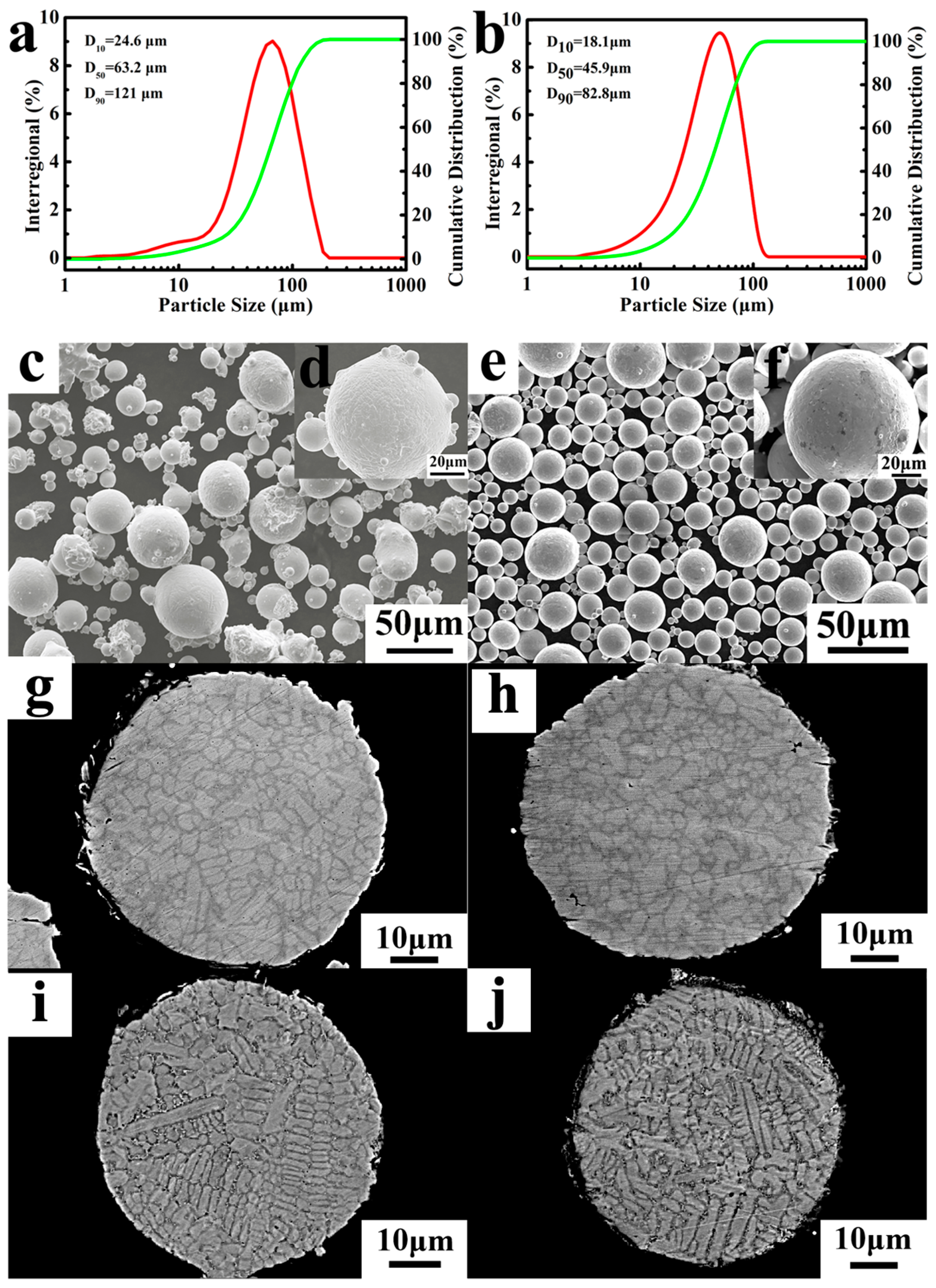
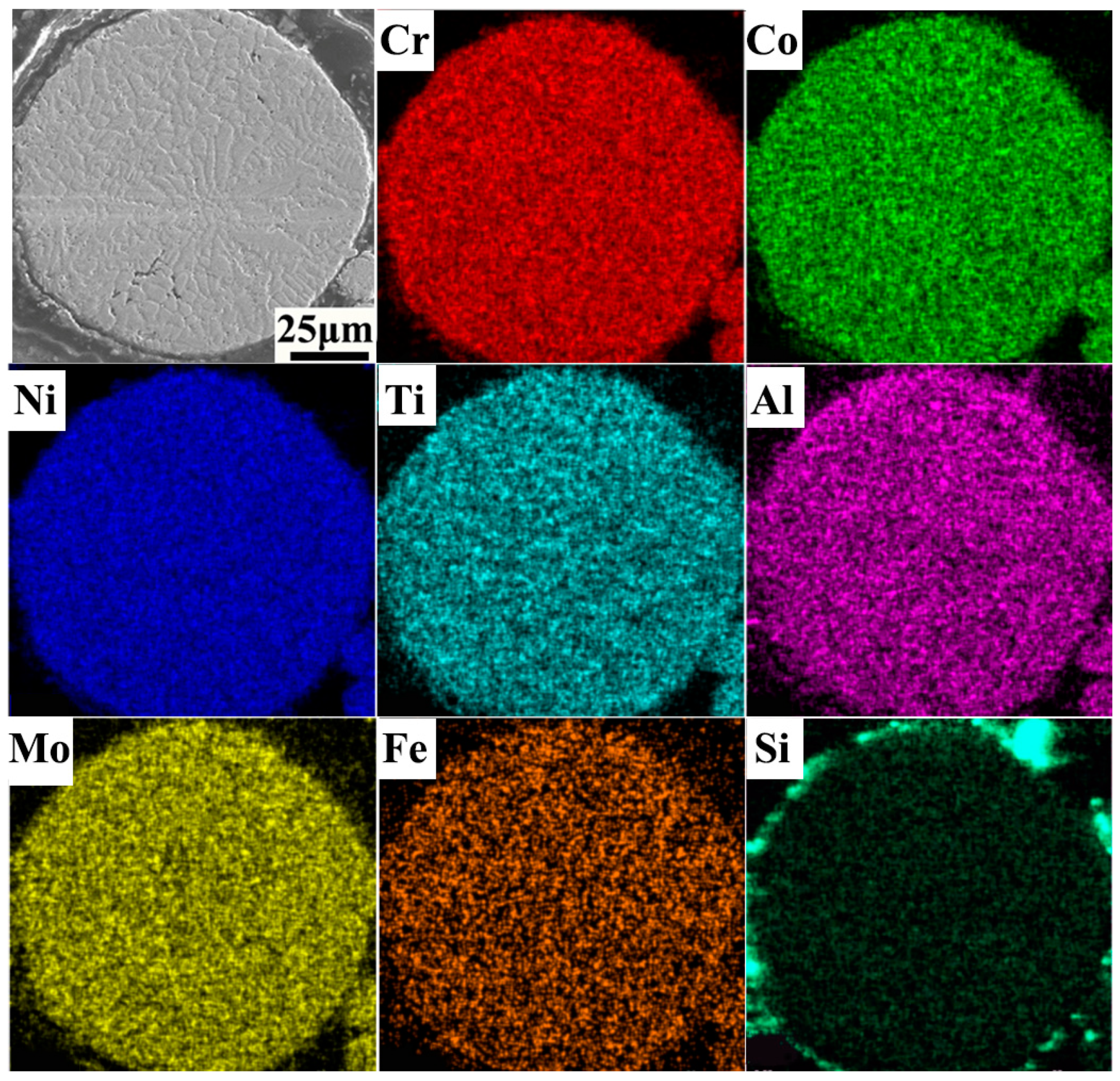
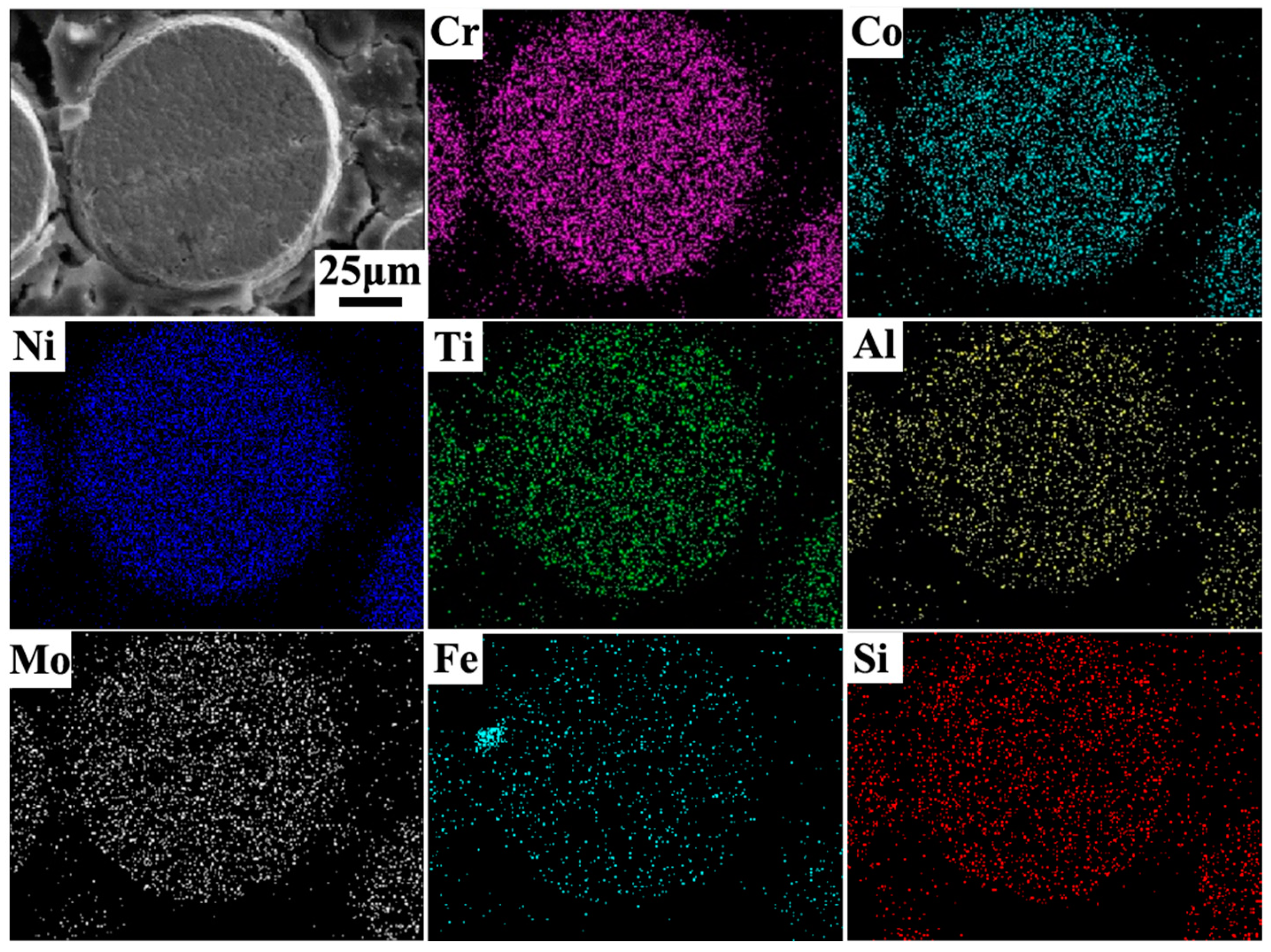

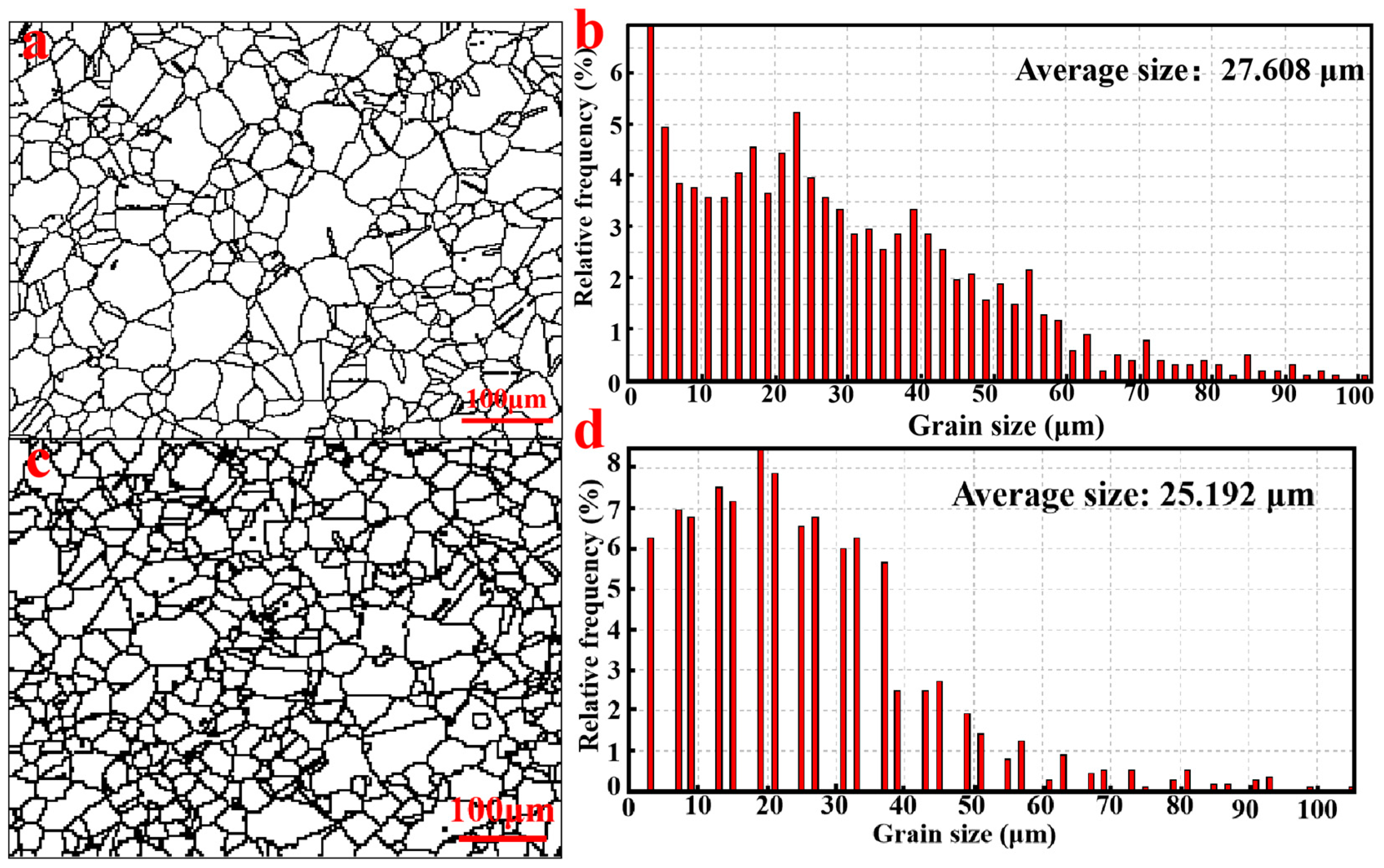

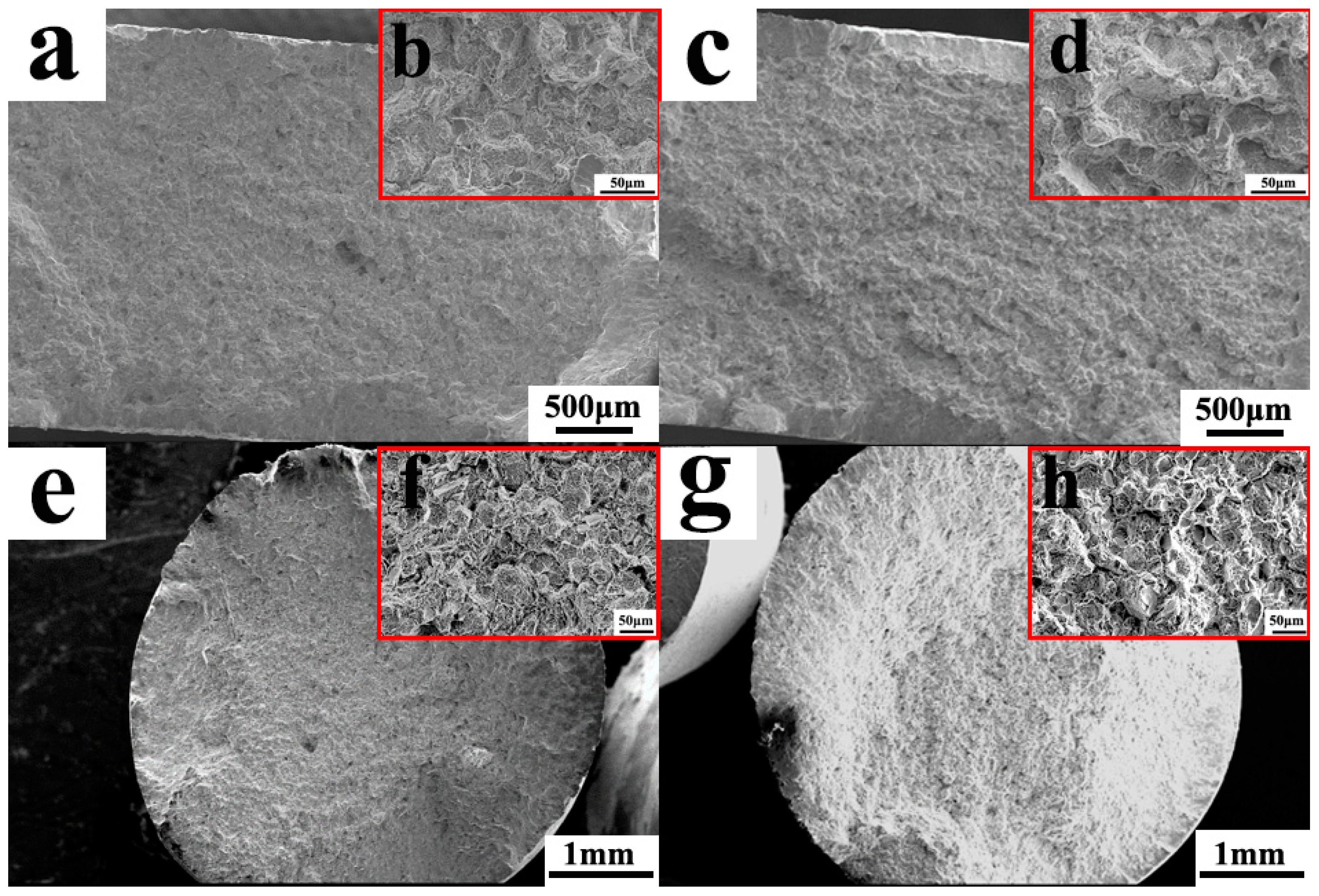
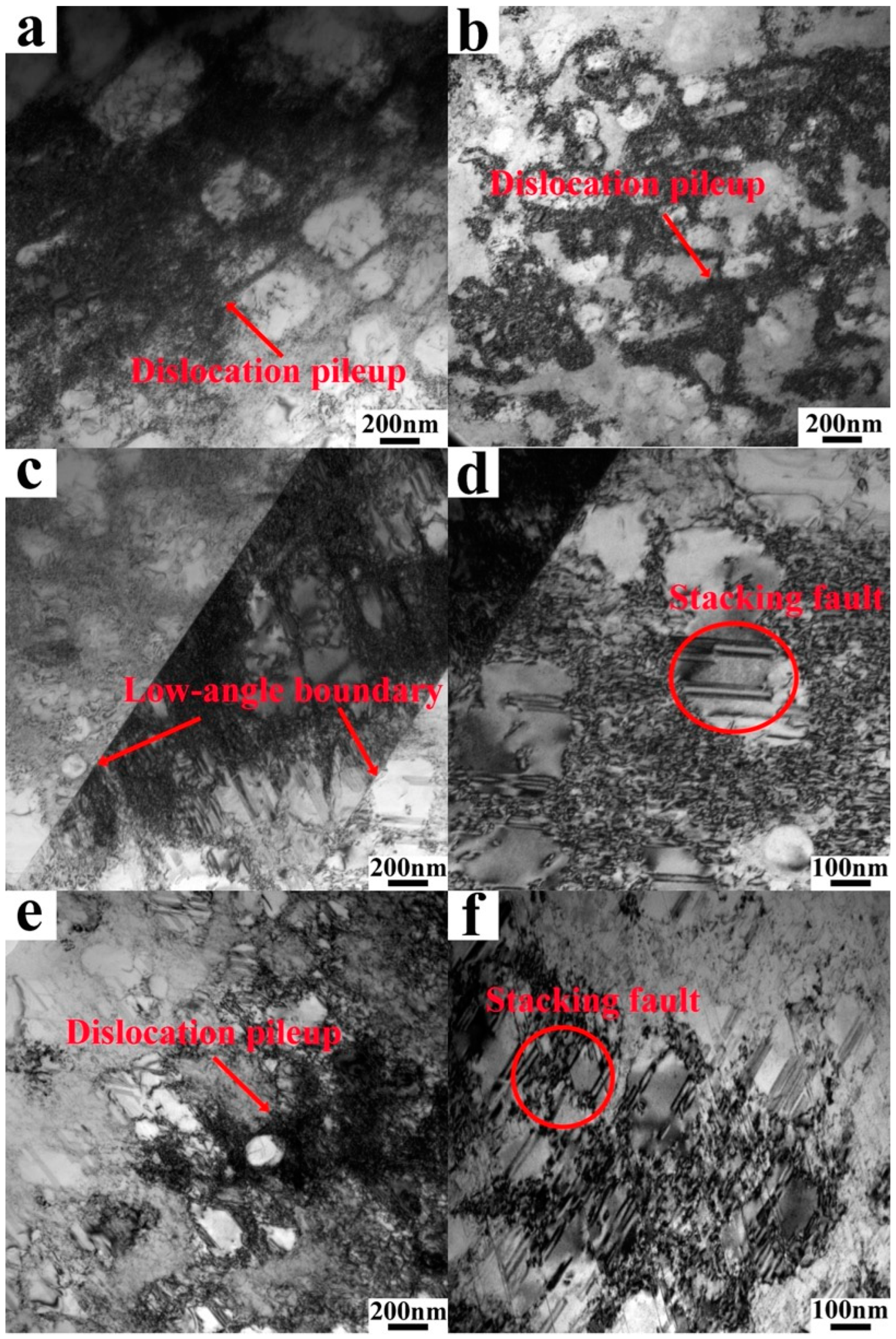

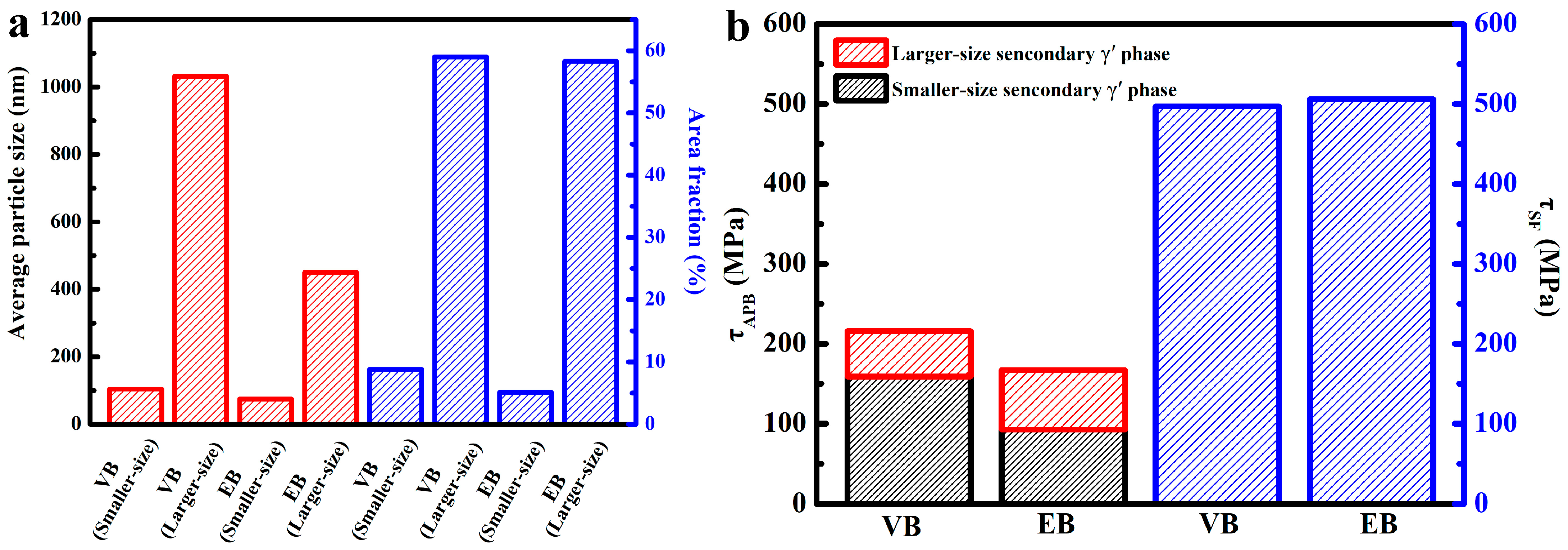
Disclaimer/Publisher’s Note: The statements, opinions and data contained in all publications are solely those of the individual author(s) and contributor(s) and not of MDPI and/or the editor(s). MDPI and/or the editor(s) disclaim responsibility for any injury to people or property resulting from any ideas, methods, instructions or products referred to in the content. |
© 2025 by the authors. Licensee MDPI, Basel, Switzerland. This article is an open access article distributed under the terms and conditions of the Creative Commons Attribution (CC BY) license (https://creativecommons.org/licenses/by/4.0/).
Share and Cite
Ren, X.; Wang, Y.; Wang, Z.; Wang, P.; Wang, Z.; Yang, L.; Qi, W.; Li, X.; Ge, C. Properties of Electrode Induction Melting Gas Atomization- and Vacuum Induction Melting Atomization-Produced Powders and Their As-HIPed Blanks. Materials 2025, 18, 710. https://doi.org/10.3390/ma18030710
Ren X, Wang Y, Wang Z, Wang P, Wang Z, Yang L, Qi W, Li X, Ge C. Properties of Electrode Induction Melting Gas Atomization- and Vacuum Induction Melting Atomization-Produced Powders and Their As-HIPed Blanks. Materials. 2025; 18(3):710. https://doi.org/10.3390/ma18030710
Chicago/Turabian StyleRen, Xiaona, Yao Wang, Zhenfan Wang, Peng Wang, Zihao Wang, Lebiao Yang, Weifeng Qi, Xinggang Li, and Changchun Ge. 2025. "Properties of Electrode Induction Melting Gas Atomization- and Vacuum Induction Melting Atomization-Produced Powders and Their As-HIPed Blanks" Materials 18, no. 3: 710. https://doi.org/10.3390/ma18030710
APA StyleRen, X., Wang, Y., Wang, Z., Wang, P., Wang, Z., Yang, L., Qi, W., Li, X., & Ge, C. (2025). Properties of Electrode Induction Melting Gas Atomization- and Vacuum Induction Melting Atomization-Produced Powders and Their As-HIPed Blanks. Materials, 18(3), 710. https://doi.org/10.3390/ma18030710






